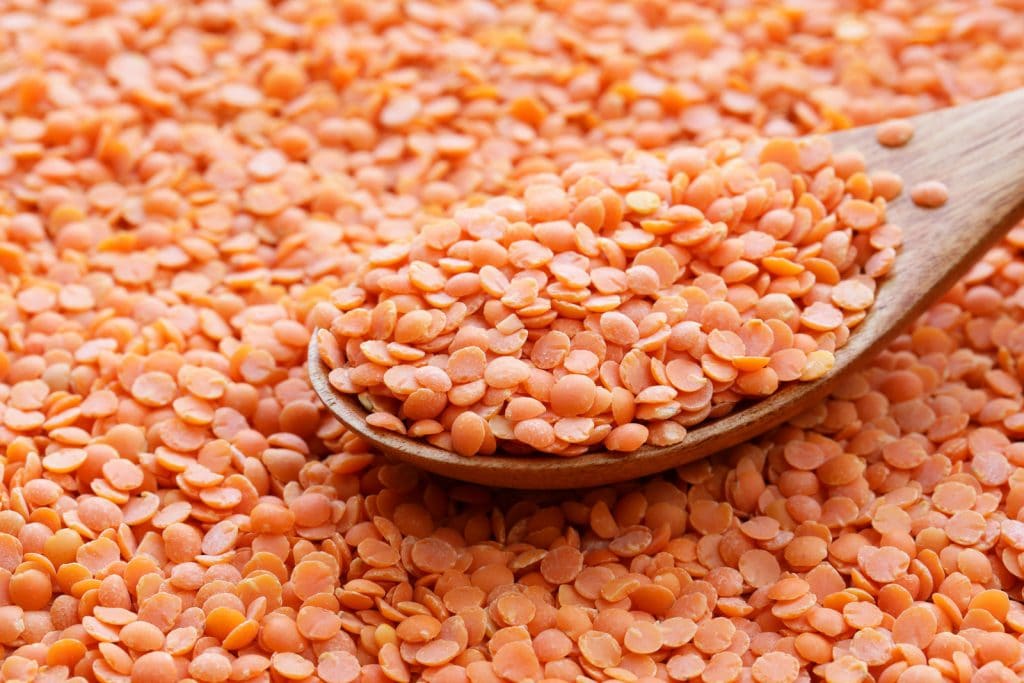[Article updated on 19/09/2023]
In order to develop muscle mass, a human being needs very specific contributions. The best-known factor influencing muscle mass gain is protein intake.
Proteins and amino acids
A protein is a series of amino acids, which, when assembled together, form the protein. If some of these amino acids are missing, the protein is incomplete and only performs part of its functions.
Among the list of amino acids, 8 are said to be essential because they are not synthesized by the body and must be provided through food. These are valine, isoleucine, leucine, tryptophan, phenylalanine, threonine, methionine, and lysine.
These different amino acids are provided by the animal and plant proteins in our diet and will allow the synthesis of proteins which will constitute our muscles.
The development of muscle mass requires protein intake of 1.2 grams to 2.5 grams per kilo of body weight depending on the individual, and this daily.
Let’s take the example of an individual weighing 70 kg. If your protein intake is estimated at 1.2g times your body weight, this gives 1.2×70 = 84 grams of protein to consume daily.
But does having to consume 84 grams of protein correspond to eating 84 grams of eggs for example? No, because 100 grams of raw eggs contain around 12.5 grams of protein. In order to get our 84 grams of daily protein, we would need to eat the equivalent of 11 eggs. It seems crazy to eat so many eggs during the day, so the solution is to vary your protein intake, which is what we will see later.
The egg, mentioned previously, is what we call the reference protein because not all protein sources are equal. Not all foods contain the same percentage of protein. For example, in the same quantity, chicken will provide more protein than eggs. Some proteins have what are called limiting factors, such as proteins from grains which do not provide lysine and proteins from legumes which do not provide methionine. The trick is to mix them to have all the amino acids on the plate (example: semolina and chickpeas in couscous): this is what we call protein complementarity.
The absorption of proteins by your body will partly depend on the digestibility of the food. It varies depending on the presence of fiber or not in the protein source (collagen in animal proteins and fiber in vegetable proteins). It can also vary depending on interactions with other foods or depending on the structure of the protein. The best solution to this is to vary foods as much as possible.
My tips for ingesting the necessary amount of protein in a day
When you are a regular athlete, the quantity of food to ingest can seem enormous when you see the recommendations, which is why there are a multitude of tips allowing you to succeed in ingesting a sufficient quantity of protein to meet your needs. physiological:
- Snacking plays a very important role in your intake during the day. This snack can allow you to supplement your protein intake outside of meals.
- Food supplements can allow you to meet your protein intake needs, in the form of protein powder such as “whey”. These protein supplements can be incorporated into recipes or even raw during snacks.
- Promote protein-rich foods in your recipes and menus. We can think of plant proteins for example like lentils or chickpeas when thinking about complementarity. You can also easily gain protein intake in desserts with cottage cheese or egg-based desserts for example.
Advice : “Before planning too big goals, know that muscle at equal volume weighs more than fat, which is why you will sometimes achieve your aesthetic or performance goal without achieving your goals on the scale!”
The role of carbohydrates
In order to optimize the development of muscle mass, the body needs a greater daily calorie intake. Carbohydrates are the main source of energy for our body, but not only that, they also have an important role other than providing energy…
Indeed, following the ingestion of carbohydrates, the pancreas will secrete a hormone called insulin. This hormone, well known to the general public in the context of diabetes, also has an interest in the development of muscle mass.
And for good reason, this hormone has the role of transporting carbohydrates to the liver and the muscles, but also has a stimulating effect on the anabolism (or in other words, the development) of cells when its concentration is high in the blood, which actually an anabolic hormone.
A controlled intake of carbohydrates provides the body with enough energy to develop muscle mass while improving it.
Now that we have discussed the role of proteins and carbohydrates in developing muscle mass, we have one last point: vitamins.
The role of vitamins
If carbohydrates are the fuel of the machine that is the body and proteins are the raw material, we must look at the gears that make up our machine! These gears are none other than vitamins.
During muscle development, it is important to provide your body with vitamin complexes essential for several metabolic reactions. Especially since they are not or only rarely synthesized by the body. We can therefore say that they are essential for the proper development of muscle mass.
So, which vitamin to choose? In what quantity?
Vitamin C, the queen of vitamins.
In addition to its antioxidant, anti-infectious, anti-fatigue, etc. properties, it plays a major role in the synthesis of collagen, a major component of muscle, each muscle fiber being surrounded by collagen.
The requirement for an adult is 110 mg per day.
70% of vitamin C comes from fresh fruits and vegetables. As long as they are in season, well preserved and eaten raw.
Parsley, blackcurrant and guava (raw) are the richest.
B group vitamins
Vitamins B6, B9 and B12 are essential because they are involved in amino acid metabolism and protein synthesis.
Vitamin B6
The daily requirements are 1.8 mg for men and 1.5 mg for women but they depend on the protein content of the ration. We recommend 1.25 mg per 100 g of daily protein. The richest foods are yeast and wheat germ, followed by offal.
Vitamin B9
The daily requirement is 330 μg for men and 300 μg for women. It is found mainly in green leafy vegetables, but also in offal and yeast.
Vitamin B12
The daily requirement is 4 μg. Essentially of animal origin, it is found in offal, beef, shellfish, dairy products, eggs, etc. It will therefore be necessary to meet the needs through cheese, eggs and dairy products for vegetarians or through B12 food supplements for vegans.
Diet is one of the elements to take into account to build muscle. It is then appropriate to have a balanced and diversified diet to meet the different criteria that we have discussed.
It should not be forgotten that physical activity adapted to the objective must be defined so that the nutrients provided can be used optimally by the body.



